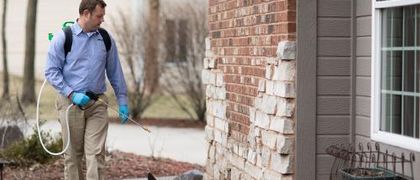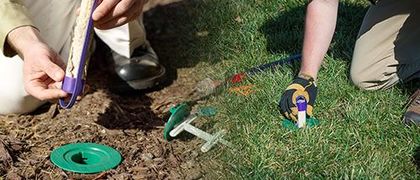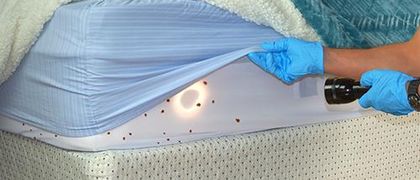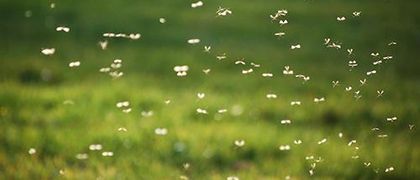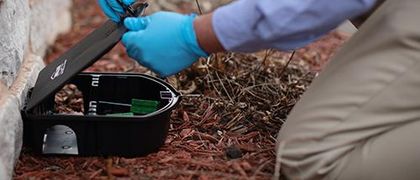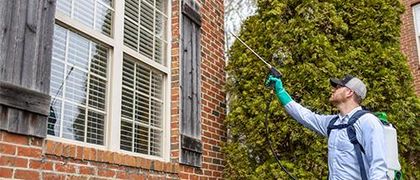Recognizing and Controlling Cicada Killer Wasps in Des Moines, IA
Often, people are terrified when confronting a certain type of wasp, known as cicada killer wasps, mainly because of their unusually large size and appearance. When you hear their name, it can be even more intimidating, but take heart. They don’t kill people. They’re called cicada killer wasps because they eat cicadas, which can be damaging to young trees, so in a sense, they’re actually beneficial.
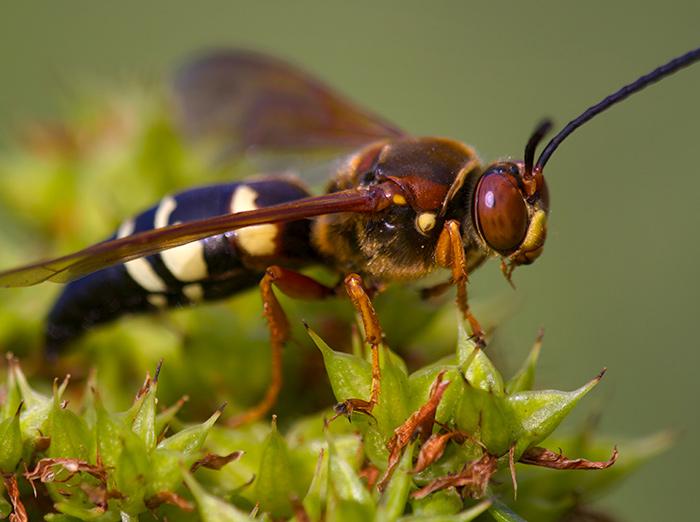
What are the dangers of cicada killer wasps?
On the other hand, cicada killers, which belong to a group of solitary wasps, can be bothersome, especially around high-traffic homes, golf courses, or around swimming pools. These wasps, also known as ground digger wasps, can also significantly damage gardens and lawns when they dig up grass to create dens for laying eggs. Here are some of the ways to control cicada killer wasps and how to recognize them.
What does a cicada killer wasp look like?
As one of North America’s largest wasps, the size of a cicada killer wasp looks daunting compared to a bumblebee as some of them are as long as 3”, although most adults are about 1 ½ to 1 5/8 “ long. Usually, the males are smaller than the females.
They have a black body with yellow or white stripes and a dark red head and thorax, along with brown wings and legs. In fact, they have a coloration that looks like that of yellow jackets or other types of wasps or hornets. Besides having a distinct color, they make their presence known with their loud buzzing sound, which can frighten people as well as predators.
What are the signs of a cicada killer wasp infestation?
There are several “red flags” that can suggest an infestation of cicada killer wasps in Des Moines. For example, noting small granular dirt mounds that range from 2” to 5” high can be a clue. If you see a hole that’s about the size of a finger, at the foot of a mound of grainy dirt, it could be an indication. You won’t find these nests in moist soil as they’re usually located in dry spots or underneath weeds, long grass, or growing flowers.
How to get rid of cicada killer wasps
While you may be able to get rid of just a couple of these wasps that fly around your property consistently by swatting them with a tennis or badminton racket, you probably need to call a professional cicada killer wasp exterminator in Des Moines when dealing with more than four wasps. To quickly kill individual wasps, apply one tablespoon of carbaryl dust inside a tunnel opening. You could also step on the wasps as they enter or leave their burrow. Another method is to brush away the dirt pile at the entrance of burrows as this can disorient female wasps so that they won’t be able to find their way back to their nests.
Applying insecticidal dust on nest entrances can work for infestations that aren’t too widespread. Just don’t disturb the burrow. This is because, in order for an insecticide to work, a wasp must come in direct contact with it.
Sprays aren’t that effective. This is because there’s not enough residue for adequately killing adult wasps while walking through a treated area. What’s more, you may need to do repeat treatments for as long as two to three weeks for new wasps moving into the area. However, you can kill adults when using a wasp aerosol spray, but this must be done at close range, which requires the skills and experience of a professional exterminator.
Things to consider when getting rid of cicada killer wasps
- Keeping your yard moist or drenching it with a garden hose can help in preventing wasps from returning as these pests don’t build their nests on wet ground.
- Locate nests during the daytime if you plan to use chemical treatments, but do the actual treatment after it gets dark or before sunrise because this is the time when it’s the coolest, so females are in their nests. An ideal time is when it’s cooler than 60 degrees F.
- Before venturing out in the dark to do a treatment, take a flashlight that’s has a red cellophane cover for lighting purposes and wear protective clothes.
- To block tunnels, use garden geotextiles that are covered in mulch for wasps in flower beds.
- It’s the female wasps that do the stinging, which is only done when they’re attacked. In other words, they’re passive and not active stingers.
Are you battling an insect or pest problem? Keep in mind that exterminators are equipped with the best tools that equal success when it comes to pest control. If you have an infestation, don’t hesitate to call the professionals at Miller Pest & Termite.
Get Help Now!

